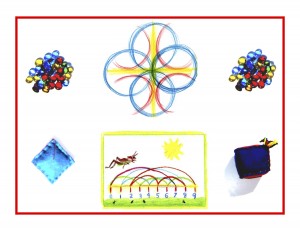Day 37
For one year, 365 days, this blog will address the Common Core Standards from the perspective of creating an alternate, ambient learning environment for math. Ambient is defined as “existing or present on all sides, an all-encompassing atmosphere.” And ambient music is defined as: “Quiet and relaxing with melodies that repeat many times.”
Why ambient? A math teaching style that’s whole and all encompassing, with themes that repeat many times through the years, is most likely to be effective and successful. Today’s post will focus on the Standard for Mathematical Practice #6. It’s paired with yesterday’s (#1) standard as the first one of 4 categories because they both express “overarching habits of mind of a productive mathematical thinker.”
Just reading that sentence prompts me to confess that I am not a math person, never was. I probably suffered from all possible math phobias, scrupulously avoiding the subject wherever and whenever possible. It wasn’t until I discovered Waldorf Education at the Institute in Spring Valley where I trained to be a Waldorf class teacher, that I found a wonderful (and welcoming) doorway into the beauty of math.
Rudolf Steiner himself, as he was staffing the first Waldorf school in Stuttgart, chose an experienced historian to teach math (or it may have been the other way around). Upon hearing the hapless teacher’s protest, Steiner said something to the effect that if he were striving to learn the subject several steps ahead of the students, it would serve as a most valuable asset, imbuing his teaching with enthusiasm for the subject.
That story gave me the courage to plunge into math along with other “weak” areas: music and singing, knitting, and science. My point here is that math, of all subjects, does not like to be taught directly, in a one-dimensional abstract mode. It needs to be embedded in the things of nature and the world. It may be best for the “overarching habits of mind” to not be solely focused on numbers and their relationship, and for the productiveness to spill over into a myriad of areas along with the numbers.
Albert Einstein, arguably the greatest mathematician ever, said not to worry about your troubles with mathematics – his were still greater. And his legacy is a veritable feast of philosophical and spiritual insights. He was not “nose to the grindstone” when he discovered the theory of relativity, but had all of the speculative calculations secreted away in his desk drawer at the Swiss Patent Office, working on them when he could, in the midst of an entirely different career. Math does not like to be approached directly, and this leads back to the concept of ambient math.
Today’s post will be structured somewhat differently than yesterday’s. The standard will be broken up into parts, a sentence at a time in blue, followed by each one’s ambient Kindergarten counterparts. References to higher mathematics will again be omitted. Yesterday’s post on the #1 standard was somewhat generalized, but I will be focusing more specifically today on the activities that directly relate.
Standards for Mathematical Practice
6. Attend to precision.
Mathematically proficient students try to communicate precisely to others.
Math is a universal language. As such, its particulars can be communicated to others in an understandable way. In the Kindergarten free play, both indoors and out, this sort of communication is continually practiced, in the interests of working together productively to produce a community project. This communication can also happen with math. For example, after the glass jars and beans have been introduced (Day 4 of this blog), they can be used communally, with clear communication and precision.
They try to use clear definitions in discussion with others and in their own reasoning.
“Discussion” could be broadened here to include other forms of communication. The time spent with shapes, in the free play, circle time, and outside segments fill this bill nicely. Days 16, 17, 18, and 19 focus on a variety of group activities with shapes: tossing and catching the fabric versions while saying their names, repeating the name of a circle, square, or triangle as it’s traced with string, discerning, together with a partner, whether an object is flat or solid are a few examples among many.
They state the meaning of the symbols they choose, including using the equal sign consistently and appropriately.
See Day 6 for a graphic, pictorial introduction of the greater / less than signs and Day 11 for addition, subtraction, and equal signs. Although the names are different (“and” for addition, “take away” for subtraction, and “is” for the equal sign) their functions are unmistakable. After the concepts and signs are introduced, the math may be practiced with objects.
They are careful about specifying units of measure.
Days 13, 14, and 15 focus on measurement with cooking and categorizing/sorting.
They calculate accurately and efficiently, express numerical answers with a degree of precision appropriate for the problem context.
Though at this level, calculation occurs with objects and symbols, it is consistently accurate. If the activities are carefully conceived and demonstrated, they will always result in the correct numerical answers. As stated throughout, though abstraction is not yet in place, strong foundations are laid for future mathematics success.
In the elementary grades, students give carefully formulated explanations to each other.
Circle time is the perfect venue for this since the group activities, if organized and orchestrated carefully, can express just such formulated explanations though joyful group activities. See Days 30 and 31’s posts for a summary of how the standards can be integrated into circle time.
Knowledge ensues in an environment dedicated to imaginative, creative knowing, where student and teacher alike surrender to the ensuing of that knowledge as a worthy goal. Tune in tomorrow for the Kindergarten Standard for Mathematical Practice #2.












